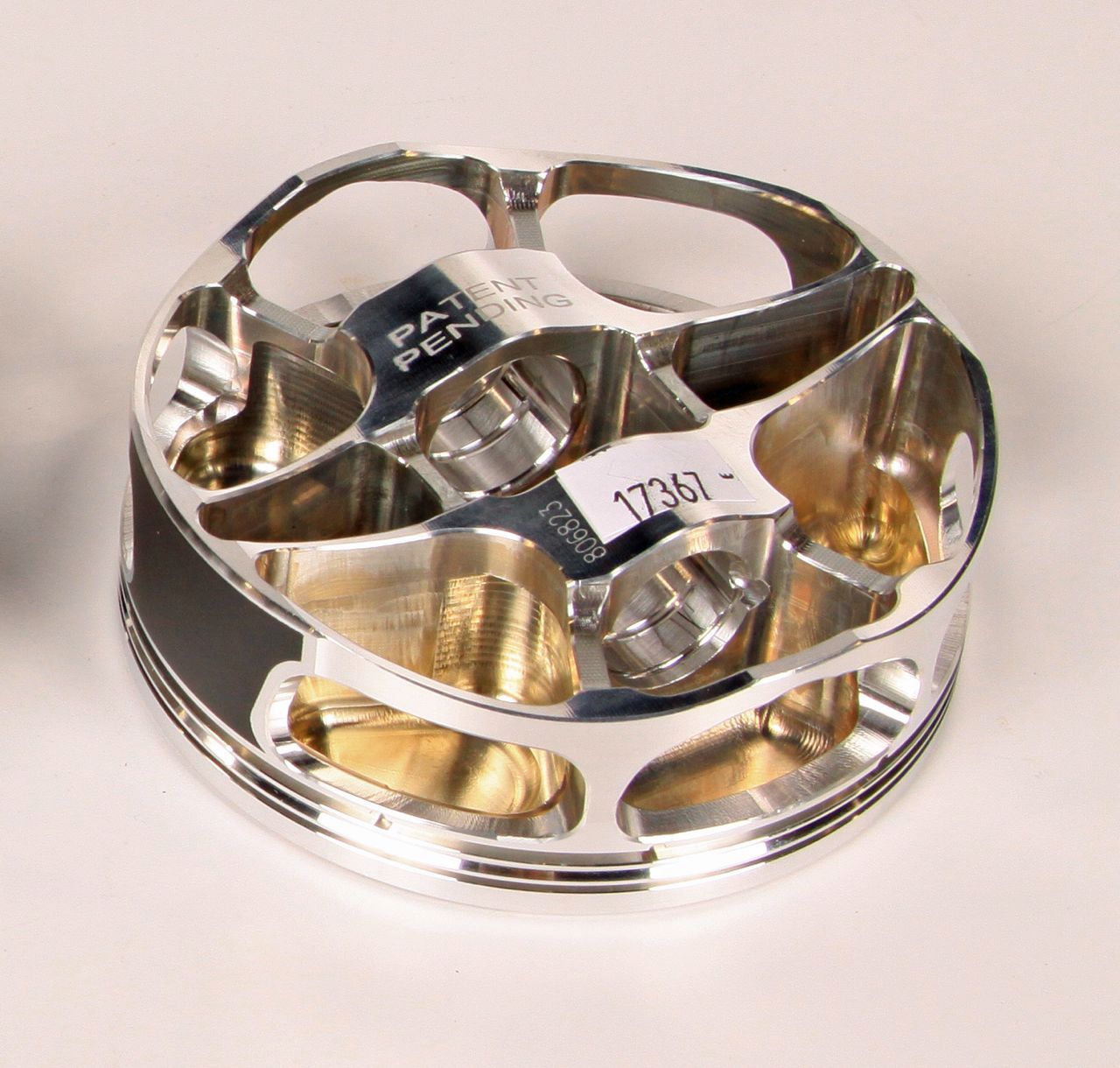
With the potential to provide a lighter yet stronger reciprocating component, Wiseco Pistons introduced a unique “caged piston” concept at the 2012 SEMA Show. Beautifully machined, the design revealed minimal skirt area compared to a full-round piston while maintaining overall stability and stiffness with a cage-like support structure.
“The goal was to find the best of both worlds between a strutted and full-round piston,” explains Ryan Nau, R&D engineering manager for Race Winning Brands, Wiseco’s parent company. “Strutted pistons are stronger and more rigid, and it’s trickier to dial in or conform a shape on the part. Also, they’re usually heavier. Full-round pistons are more adaptive to the cylinder bore and typically lighter than strutted.”

While the caged piston usually drew a crowd at the show, it never saw the light of production or received a catalog part number. The idea first came from an R&D engineer from sister company JE Pistons, who later moved on to another company, and he was supported by the R&D manager, who later retired.

“They worked on it together. At the time, there were a lot of positives and negatives for strutted and full-round parts. They knew that because we work with so many different customers and applications. So, it was an attempt to go at it with all that knowledge,” continues Nau. “The engineer was a knowledgeable guy and did all the FEA analysis required to prove out the design. He probably spent about a year and a half designing that part.”
A few prototypes were machined from billet and tested in-house. The concept was also tried on the track with a flat-track motorcycle team running a 450cc engine. The pistons survived the races and were returned for analysis. Yet, the project never progressed further.
“That 450 flat-track engine was one of the hardest applications imaginable because they’re always wide-open throttle,” says Nau. “There was some data and feedback but the guy who came up with the concept moved on. The idea never gained traction.”
The caged piston wasn’t held back from production because of material failure or low performance assessments. Rather, improved machining capabilities and newer piston designs allowed the company to manufacture pistons with similar qualities at a lower price.

“We can do full 3D 5-axis machining now, and there’s so much detail that we can put into a CAD model. As long as the tool can reach it, we can machine it,” says Nau. “Plus, we also have new forging techniques that aligns the grain structure.”
Looking back, Nau says the caged-piston project demonstrates that the company strives to stay innovative always try new ideas.
“This caged design did fizzle out, but we learned a lot from it and can apply that to what we are doing now,” sums up Nau. “There is a lot of talent between sales, product management, engineering and R&D that is leveraged to make sure customers are getting what they expect. A lot of the teams are racers themselves, so they understand the customers’ passion to win.”



